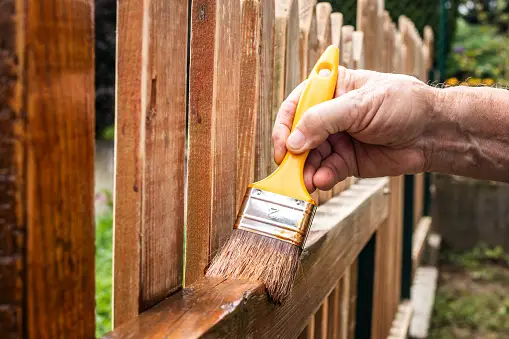This Blog Looks Into How Parents Can Tame Rudeness in Their Adolescent Children.
Taming the Tempest: Effective Strategies for Handling a Rude Adolescent Child
Adolescence – a period of transformation, exploration, and yes, sometimes, rudeness. Teenagers are navigating a complex world of hormonal shifts, evolving identities, and a growing desire for independence. This often manifests in challenging behaviors, including rudeness towards parents and caregivers. While it can be frustrating and upsetting, understanding the root causes and employing effective strategies can help you navigate this turbulent time.
Understanding the Why Behind the Rudeness
Before diving into solutions, it's crucial to understand why your adolescent might be acting out. Several factors can contribute to their rudeness:
- Developmental Stage: During adolescence, the brain undergoes significant changes. The prefrontal cortex, responsible for impulse control and decision-making, is still developing. This can lead to impulsive outbursts and a lack of filter in communication.
- Separation and Independence: Teens are naturally drawn to asserting their independence and establishing their own identities. This can sometimes manifest as pushing boundaries and challenging authority figures, including parents.
- Emotional Turmoil: Adolescence is a time of intense emotions. From academic pressures to social anxieties, teenagers grapple with a range of feelings they may struggle to express constructively. Frustration can then manifest as rudeness.
- Modeling and Environment: Children learn by observing the behavior of those around them. If rudeness is present in your own communication style or within your family dynamics, your teenager may mirror that behavior.
Maintaining Your Cool: De-escalation Techniques
When faced with an outburst of rudeness, it's tempting to react in kind. However, escalating the situation will only make things worse. Here are some effective de-escalation techniques:
- Stay Calm: Take a deep breath and avoid taking their rudeness personally. Reacting with anger or frustration will only fuel the fire.
- Active Listening: Resist interrupting or jumping to conclusions. Listen attentively to what your teenager is trying to communicate, even if it's wrapped in rudeness.
- Acknowledge Their Feelings: Validate their emotions by saying something like, "I understand you're feeling frustrated right now." This can help them feel heard and open the door for a more constructive conversation.
- Set Boundaries: While understanding their feelings is important, rudeness is unacceptable. Set clear boundaries regarding what kind of behavior is tolerated in your home.
Communication is Key: Fostering Open Dialogue
Once the initial tension has subsided, creating an open and honest dialogue is crucial. Here's how to approach the conversation:
- Choose the right time: Don't try to have a serious conversation when emotions are running high. Choose a calm moment when both you and your teenager are receptive to talking.
- Focus on behavior, not personality: Avoid personal attacks or labeling your teenager as "rude." Instead, focus on the specific behavior and how it made you feel. For example, "When you slammed the door and called me names, it hurt my feelings."
- Open-ended questions: Encourage communication by asking open-ended questions that go beyond a simple "yes" or "no" answer. This encourages your teenager to explain their perspective and facilitates a deeper understanding. For instance, "What's going on that's making you so frustrated lately?"
- Joint problem-solving: Work together to find a solution that addresses both your concerns and your teenager's needs. This fosters a sense of agency and encourages your teenager to take ownership of their behavior.
Natural Consequences and Positive Reinforcement
Consequences are a necessary part of learning. However, the focus should be on natural consequences that are directly related to the behavior. For instance, if your teenager is rude to a guest, they may lose phone privileges for an evening.
Positive reinforcement is equally important. Acknowledge and praise good behavior. This creates an incentive for them to adopt more respectful communication patterns. "I really appreciate it when you use a calm tone and explain your frustration."
Addressing Underlying Issues
Sometimes, rudeness can be a symptom of a deeper problem. If your teenager's behavior is persistent or accompanied by other concerning signs like withdrawal, depression, or dramatic mood swings, it might be time to seek professional help. A therapist can provide valuable guidance and support for both you and your teenager.
Maintaining Open Communication: Strategies for the Long Haul
Open communication – the cornerstone of healthy relationships. It allows us to share our thoughts, feelings, and needs with others, fostering trust, understanding, and connection. However, maintaining open communication, particularly across generations, can be a constant challenge.
This article explores strategies for navigating the ever-evolving dynamics of family life, from the early years of exploration to the complexities of adolescence and adulthood. By implementing these strategies, you can build bridges of communication that will strengthen your relationships for years to come.
Early Childhood: Laying the Foundation for Open Communication
The foundation for open communication is laid in the early years of a child's life. Here's how to nurture this from the very beginning:
- Active Listening: Pay close attention to your child's verbal and nonverbal cues. Make eye contact, acknowledge their emotions, and respond in a way that shows you understand. This builds trust and encourages them to express themselves freely.
- Open-Ended Questions: Instead of questions with yes or no answers, use open-ended questions like "Tell me more about what you built with your blocks?" or "How did you feel when your friend took your toy?" This encourages them to elaborate, fostering deeper connection and communication.
- Validate Their Feelings: Let your child know that their feelings are valid, even if you disagree with them. Phrases like "I can see you're feeling angry" or "It's okay to feel sad sometimes" create a safe space for them to express themselves openly.
The School Years: Navigating New Challenges
As children enter school, their world expands. They encounter new experiences, friendships, and challenges. This is a crucial time to maintain open communication:
- Create a Safe Space: Let your child know they can come to you with anything, no matter how big or small the issue. Ensure they feel safe confiding in you without fear of judgment or punishment.
- Actively Show Interest: Show genuine interest in their school life, friends, and hobbies. Ask questions, listen attentively, and offer support and guidance when needed. This demonstrates your investment in their world and strengthens the bond between you.
- Set Ground Rules for Technology: As your child interacts with technology, establish ground rules for responsible use. Open communication about online safety, appropriate content, and healthy screen time limits helps foster trust and responsible online behavior.
The Tumultuous Teens: Navigating Independence and Identity
Adolescence is a period of significant transformation. Teens grapple with establishing their identities, asserting independence, and navigating a complex social world. Here's how to maintain open communication during this turbulent time:
- Respect Their Privacy: While open communication is vital, respect your teenager's need for privacy. There will be times when they may not want to share everything with you. Striking a balance between open communication and respecting their burgeoning individuality is crucial.
- Focus on Active Listening: Adolescents often communicate in indirect ways. Pay close attention to non-verbal cues, and listen attentively without interrupting. Acknowledge their emotions and avoid jumping to conclusions.
- Focus on Problem-Solving: Instead of lecturing or criticizing, approach challenges as opportunities for collaborative problem-solving. Engage in open discussions about solutions, fostering a sense of agency and respect for their opinions.
Young Adulthood and Beyond: Nurturing Adult Relationships
As your children transition to adulthood, the dynamics of communication shift. Here are tips for fostering healthy communication:
- Respect Their Independence: Acknowledge your children as independent adults. They have the right to make their own choices, even if you disagree. Offer guidance and support, but avoid controlling behavior.
- Maintain Interest in Their Lives: Continue to show genuine interest in their lives, careers, and relationships. Ask questions, celebrate their achievements, and offer a listening ear when they face challenges. This strengthens the bond and demonstrates your ongoing support.
- Set Boundaries: Healthy adult relationships require clear boundaries. While you want to maintain open communication, avoid overstepping boundaries or offering unsolicited advice. Respect their privacy and allow them the space to navigate their adult lives.
Building Bridges Across Generations
Maintaining open communication across generations requires effort from both sides. Here are some additional tips for a successful journey:
- Empathy and Understanding: Remember, different generations have unique experiences and perspectives. Cultivate empathy and understanding, acknowledging the validity of their viewpoint even if it differs from yours.
- Embrace Technology: Technology can be a bridge for communication. Use technology platforms like video calls or texting to stay connected, especially if you live far apart.
- Find Common Ground: Despite generational differences, there will be common ground. Explore shared interests, activities, or hobbies to strengthen the bond and create opportunities for meaningful interaction.
Conclusion
Maintaining open communication is a lifelong journey, requiring dedication and effort from all parties involved. By implementing the strategies outlined above, you can build bridges of understanding across generations, fostering stronger relationships built on trust, respect, and mutual support.
Remember, communication is a two-way street. Actively listen, validate emotions, and engage in open dialogue. Create safe spaces for genuine expression, and celebrate both triumphs and challenges together. As your family navigates the ever-evolving landscape of life, open communication will remain the cornerstone of a strong and supportive network, ensuring connection and love endure for years to come.
While there will be disagreements and misunderstandings along the way, the foundation of open communication allows for healthy conflict resolution and strengthens the bonds that tie families together. So, nurture these connections, embrace open dialogue, and cherish the journey of communication across generations.








.webp?locale=en)

















